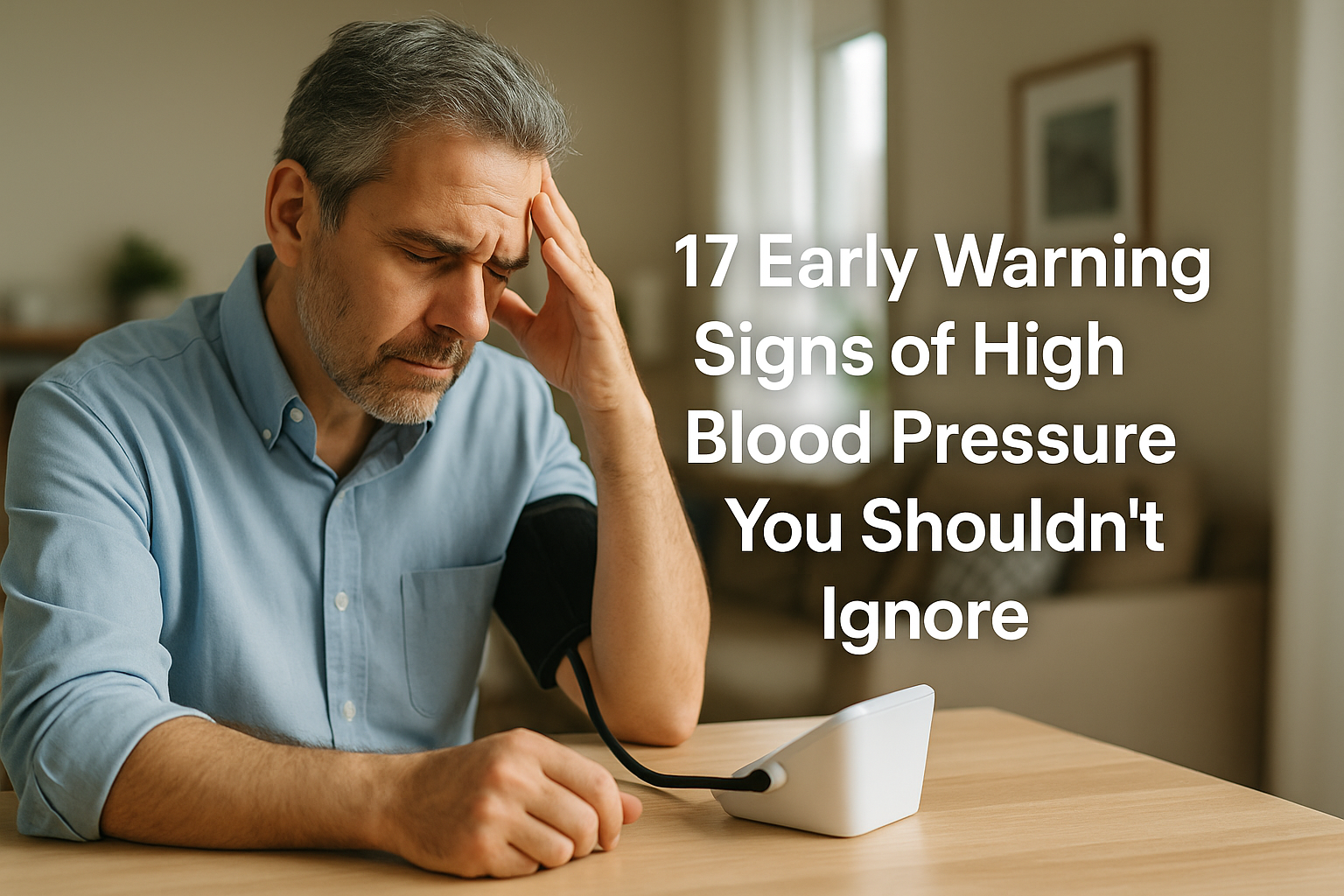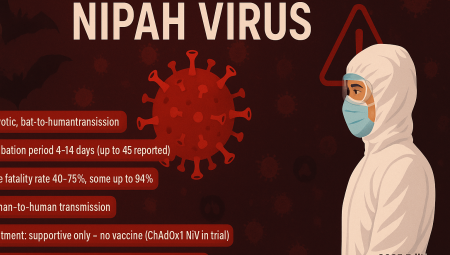What Is High Blood Pressure (Hypertension)?
High blood pressure, or hypertension, occurs when the force of blood against your artery walls is too high. This condition can go unnoticed for years—earning it the nickname “the silent killer.”
Normal readings:
-
Below 120/80 mmHg is healthy
-
130/80 mmHg and above may indicate high blood pressure
Over time, uncontrolled hypertension can lead to stroke, heart attack, kidney damage, and more.
Why Recognizing Early Signs Matters
Most people with high blood pressure don’t show symptoms until it’s advanced. That’s why noticing early signs—even subtle ones—can:
-
Help prevent life-threatening complications
-
Encourage lifestyle changes or early treatment
-
Save your life or someone else’s
Let’s explore these signs in detail.
17 Early Symptoms and Warning Signs of High Blood Pressure
-
Persistent Headaches – Especially in the morning or at the back of the head.
-
Fatigue or Confusion – Due to reduced oxygen reaching the brain.
-
Frequent Nosebleeds – May indicate vessel strain.
-
Blurred Vision – Resulting from vascular changes in the eyes.
-
Dizziness or Lightheadedness – Often overlooked but significant.
-
Chest Discomfort – Could suggest strain on the heart.
-
Irregular Heartbeat – Skipped beats or pounding in the chest.
-
Shortness of Breath – Especially during mild exertion.
-
Nervousness or Anxiety – Sometimes linked to pressure spikes.
-
Facial Flushing – May occur during sudden spikes.
-
Tinnitus (Ringing in the Ears) – Tied to blood flow changes.
-
Blood Spots in Eyes – Noticed during eye exams or by eye strain.
-
Poor Sleep or Insomnia – Can be both cause and effect of elevated pressure.
-
Nausea or Vomiting – In severe hypertensive cases.
-
Swollen Ankles or Legs – Suggests fluid retention or heart strain.
-
Heart Palpitations – Irregular or rapid heartbeat.
-
Lightheadedness When Standing Up – Called orthostatic hypotension; a warning sign.
Common Causes and Risk Factors
High blood pressure can develop from various lifestyle, genetic, and environmental factors. Key contributors include:
-
Genetics: A family history of hypertension increases your risk.
-
Unhealthy Diet: Diets high in sodium, sugar, and processed foods contribute to elevated blood pressure.
-
Physical Inactivity: Lack of movement weakens the heart and circulatory system.
-
Excess Weight: Extra body mass strains the heart.
-
Smoking: Damages blood vessels and accelerates hypertension.
-
Alcohol Consumption: Raises blood pressure and heart rate over time.
-
Chronic Stress: Triggers hormonal imbalances that can elevate blood pressure.
-
Underlying Conditions: Diabetes, kidney disease, or thyroid issues can lead to secondary hypertension.
Knowing these risk factors empowers you to take control of your cardiovascular health early on.
How to Monitor and Detect High Blood Pressure Early
Catching high blood pressure before symptoms worsen is critical. Here’s how:
-
Use Home BP Monitors: Choose an automatic upper-arm cuff for accuracy. Take readings at the same time each day.
-
Track Your Numbers: Record your systolic (top) and diastolic (bottom) numbers over weeks to detect trends.
-
Schedule Regular Checkups: Annual physicals or biannual visits are essential, especially if you’re over 40 or at risk.
-
Understand the Numbers:
-
Normal: Less than 120/80
-
Elevated: 120–129/<80
-
High: 130+/80+ (Stage 1 or 2 hypertension)
-
Early detection = early intervention.
Lifestyle Tips to Lower High Blood Pressure
Managing hypertension doesn’t always require medication—small, consistent lifestyle changes make a big impact:
-
Follow the DASH Diet: Focus on vegetables, fruits, low-fat dairy, whole grains, and lean proteins.
-
Limit Salt Intake: Aim for less than 1,500 mg/day.
-
Exercise Regularly: At least 150 minutes of moderate activity per week.
-
Manage Stress: Meditation, yoga, or even deep breathing helps lower cortisol and blood pressure.
-
Avoid Tobacco and Limit Alcohol: Both are known to raise BP levels significantly.
-
Sleep Well: 7–9 hours of quality sleep reduces blood pressure variability.
These changes not only manage blood pressure but also boost overall heart and brain health.
When to See a Doctor Immediately
Seek medical attention if you experience:
-
Chest pain
-
Shortness of breath
-
Severe headaches with blurred vision
-
Sudden confusion or trouble speaking
-
Very high blood pressure readings (e.g., 180/120 mmHg or higher)
These may signal a hypertensive crisis, which requires immediate care.
FAQs About Early Signs of High Blood Pressure
Q1: Can I feel high blood pressure without measuring it?
Not always. Most cases are silent. That’s why regular checks are crucial.Q2: Are headaches always a sign of high blood pressure?
No, but frequent, persistent headaches—especially in the morning—can be a warning sign.Q3: Is high blood pressure permanent?
Not always. With lifestyle changes, it can be managed or even reversed in early stages.Q4: What age should I start checking my blood pressure?
Start regular checks by age 18—earlier if you have risk factors.Q5: How often should I check my BP at home?
2–3 times per week for general monitoring, or daily if diagnosed or at risk.
Conclusion: Don’t Let Hypertension Go Unnoticed
High blood pressure is sneaky—but you don’t have to be caught off guard. By recognizing the early signs of high blood pressure, getting regular checks, and making proactive changes, you can prevent severe complications down the line.
Don’t wait for a crisis—take charge of your heart health today.
🔗 External Resource: American Heart Association – Understanding Blood Pressure Readings
-



